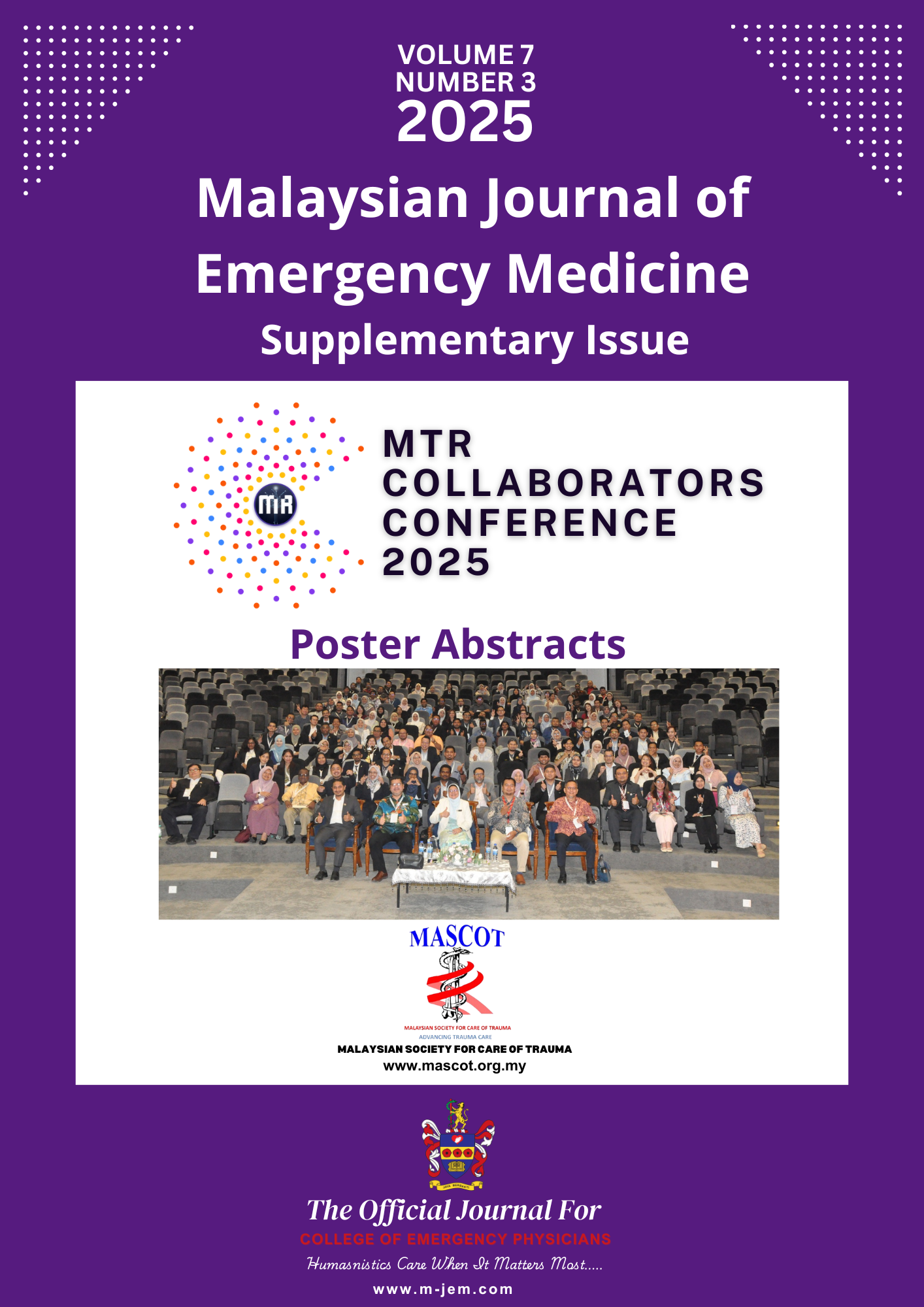A07 TEMPEST Study: Temporal Patterns and Incidence of Severe Trauma in Seberang Perai
Main Article Content
Abstract
INTRODUCTION
Trauma is a major cause of morbidity and mortality worldwide and remains the leading cause of death among Malaysians under 40 years old, with road traffic accidents contributing significantly. International research has shown that external temporal factors, such as time of day, day of week, and seasonal variations, influence trauma incidence and outcomes. However, local evidence remains limited. This study examined the demographic characteristics, injury patterns, and temporal distribution of severe trauma in the Emergency Department (ED) of Hospital Seberang Jaya (HSJ).
METHODOLOGY
A retrospective cross-sectional study was conducted using the Malaysia Trauma Registry (MTR) data of HSJ. All severe trauma recorded between January 2021 and February 2025 (N = 378) were analyzed. Variables included demographics, mechanism and type of injury, time of day, length of hospital stay, and mortality. Data were analyzed descriptively, with outcomes stratified by temporal factors.
RESULTS
The mean age of patients was 39.05 ± 18.63 years, with male predominant (84.9%). Blunt trauma accounted for 98.4% of cases, while transport-related accidents were the main mechanism (87%). Trauma presentations peaked in the evening (31.5%) and afternoon (25.7%) and were lowest at night (18.5%). Mean hospital stay was 9.31 ± 11.97 days, longest among night-time admissions (11.35 days). In-hospital mortality was 13.5%, with the highest mortality recorded in morning admissions (22.8%).
DISCUSSION
Findings highlight the need to strengthen trauma care capacity during peak hours through improved ambulance response, trauma-trained ED staff, and rapid surgical access. Prevention efforts should target high-risk groups, particularly young male road users.
CONCLUSION AND IMPLICATIONS
The findings are consistent with global studies showing higher trauma incidence during periods of increased traffic and activity. The increased evening mortality highlights potential challenges in timely trauma care delivery. These results provide locally relevant evidence for optimizing ED staffing, trauma system readiness, and targeted injury prevention strategies in Malaysia.
Metrics
Article Details

This work is licensed under a Creative Commons Attribution-NonCommercial 4.0 International License.

